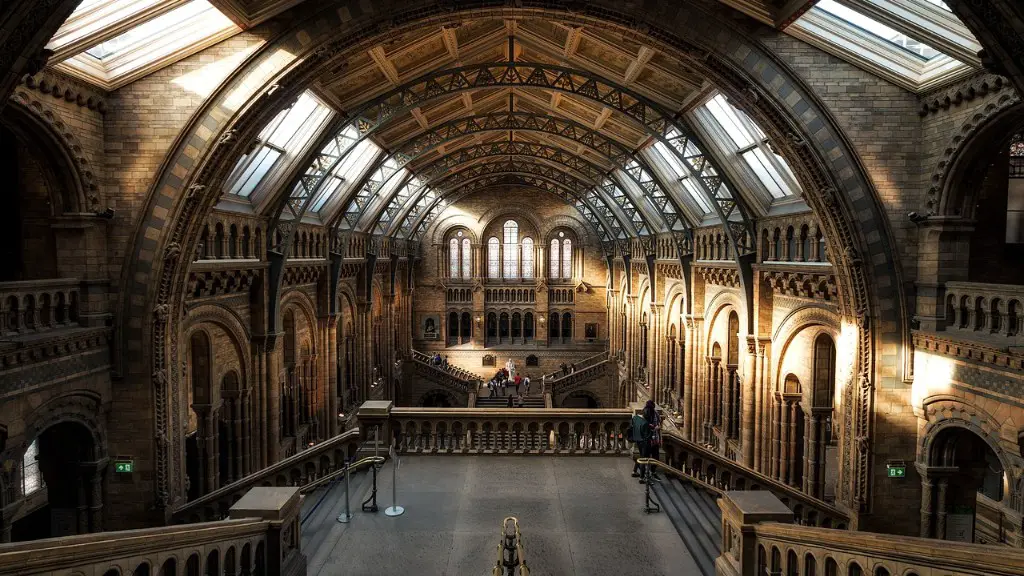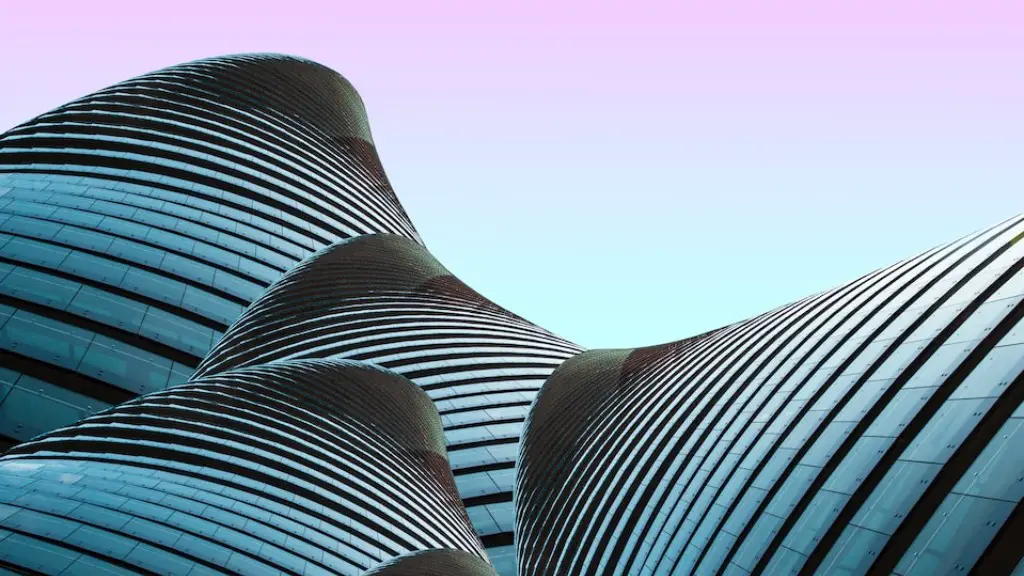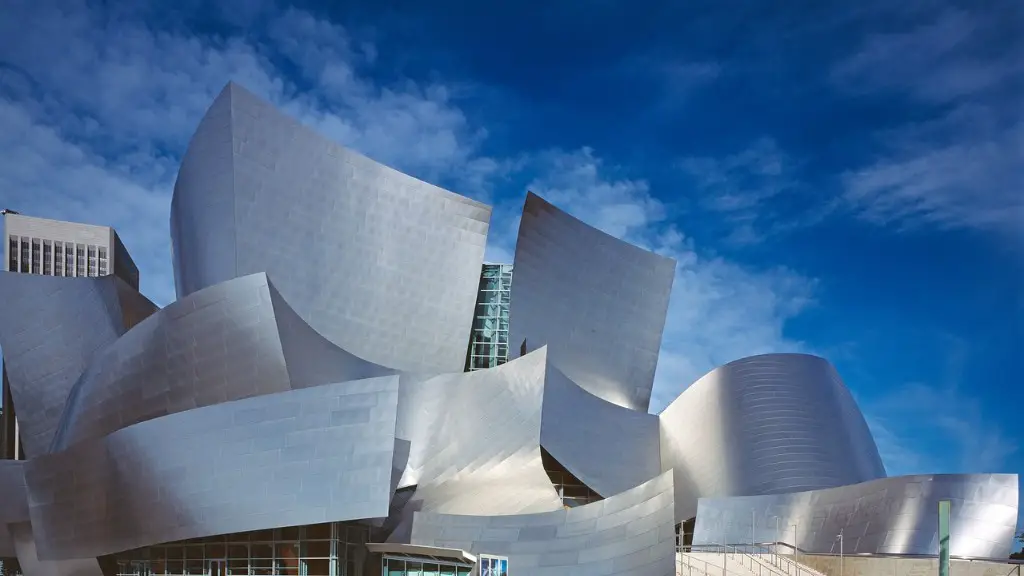What is the difference between sculpture and architecture? This is a question that many have asked and few have answered. Both art forms have a long and varied history that dates back centuries and is deeply embedded in the cultures and societies of many parts of the world. So it is understandable why some might be confused in distinguishing one from the other. Let us commence in defining and exploring each of these mediums, and ultimately gaining insight into the main distinctions between sculpture and architecture.
Sculpture is generally regarded as one of the oldest art forms in human history and it is defined as a three-dimensional artistic work, created from materials such as stone, wood, clay or metal. The act of creating sculpture is often referred to as ‘sculpting’ and comes in a variety of mediums, including wood, metal and glass. Generally, the emphasis of sculpture is often on the form and physical qualities of the object and in most cases the artist’s intention is to create something visually captivating.
Architecture, on the other hand, is defined as the process and product of designing and constructing a building. Its purpose is to create built environments which are aesthetically pleasing, as well as functional and structurally sound. Architecture also encompasses a vast subject, which can be grouped into categories such as ergonomic and sustainable design, as well as historical and modern styles. It employs many practices, material applications and artistic techniques, with a purpose of providing a pleasing and usually safe environment to live in.
There are a number of differences between sculpture and architecture that are evident through closer examination of the two. To begin, sculpture is a tangible work of art and can be created in an array of different ways – ranging from classical stone and marble carving, to modern steel and stone constructions. On the other hand, architecture is mainly concerned with the design and structural integrity of a building and encompasses many areas such as ergonomics, sustainability and materials. Sculpture is often focused on the aesthetics of the work and is considered a three-dimensional art form, while architecture is mostly focused on the structural and operational elements of a building.
In other words, sculpture is the art of creating a physical object, while architecture is the science of constructing a building. Another key difference is the fact that sculpture is often created for aesthetic reasons or to express the artist’s own unique ideas, and can be the product of an individual’s creativity. Whereas, architecture is usually created to meet specific needs and is often an embodiment of a culture’s beliefs and customs.
In essence, sculpture and architecture are two distinct creative forms that have undergone many centuries of development, which have resulted in the distinct differences we observe today. Each of these individual mediums has its own unique set of characteristics, thus creating a dynamic relationship between the two. Though sculpture and architecture are separate entities, there is still a great and powerful synergy between them, and this is evident through the many sculptures that adorn the exterior of buildings – and further prove the point of their relationship.
Properties and Characteristics of Architecture
It is widely accepted that architecture should adhere to a specific set of properties and characteristics to truly be considered as architecture. These properties may vary slightly depending on the region or time-period, but generally architecture should be a structurally sound and ergonomic design. The structure of a building should be designed in such a way to provide a safe environment, and be able to withstand natural disasters, wear and tear, and human abuse. Additionally, the materials used in an architectural project should be of a certain type and quality, to ensure the longevity and durability of the structure.
Architecture is also often a reflection of the culture that created it. This is evident when we look at the various building styles from different regions of the world. Buildings in the Middle East are often adorned in arabesque decorations and ornate geometric shapes – a reflection of its unique culture and beliefs. Similarly, buildings in Europe often express the wealth and prosperity of the region’s history, by featuring gargoyles, intricate sculptures and beautiful masonry work. Architecture is also often a measure of wealth, as a structure’s design, location and size can determine its market value.
In conclusion, architecture is a complex subject that plays an important role in the lives of its inhabitants and is a reflection of the culture that created it. It should adhere to specific principles and standards in order to provide safety and comfort – this is its primary purpose.
Properties and Characteristics of Sculpture
In comparison to architecture, sculpture is a more tactile art-form that offers creative freedom and often focuses more on the aesthetic side of creating a three-dimensional artwork. Sculpture can be produced from almost any material – ranging from marble and clay, to metal and wood. This offers a wide range of possibilities for the artist, allowing them to express their own unique style or message. Although there is no set of rules that define the art of sculpture, it usually adheres to basic principles of form and visual appeal.
The main purpose of sculpture is usually to capture the viewers attention and evoke an emotional response, although this is certainly not a requirement. This is often achieved through abstract forms and shapes which are used to create a visually appealing piece. This can further be amplified by the artist’s own personal touches and techniques, such as chiseling or carving into the material. Additionally, sculptures may often feature intricate details and fine finishing – sometimes going as far as to add additional figures, ornaments and accessories to the artwork.
Sculpture can be used in many fields such as industrial design, interior design, or for the purpose of creating public art. For example, sculptures may be created as a memorials to commemorate a war or an event from history. They can also be used to form part of a larger artwork – such as when monumental structures or structures of public importance are modeled after a sculpture. The aim here is to create something that is visually beautiful, often enabling the artist to express their own personal message or create a focal point for a particular location.
Synergy Between Sculpture and Architecture
As mentioned earlier, sculpture and architecture have a strong relationship, and this is evident through the number of sculptures that are placed outside and around buildings. This is often done so as to enhance the appearance of a building, providing an especially aesthetically pleasing landscape or cityscape. For example, sculptures that adorn the exterior of a palace or church often serve to balance the structure and draw attention to certain parts of the building.
Furthermore, sculptures are often used in large public projects such as public gardens or promenades. Here, the entire area is often designed to reflect a certain theme or message and sculptures are used to emphasize certain features or focal points. This philosophy is also often applied to individual buildings, where the presence of sculptures can help to bring the concept of the building to life, creating a unique aesthetic experience for the viewer.
In many cases, the addition of sculptures, such as statues or fountains, to a building or an area increases its overall attractiveness and may even increase the value of a property. Additionally, these structures can be used to express an artist’s own personal views and through their messages, can sometimes serve to educate or inform those that view them.
The Significance of Sculpture and Architecture
Sculpture and architecture are two art forms that have been experienced by humanity for thousands of years and over time, have grown to become invaluable to society. Each of them provides its own unique perspective, exposing us to new ideas, cultures and concepts. Sculptures bring us closer to understanding our heritage and the history of many civilizations, while architecture reminds us of important events and documents our collective history.
Additionally, they both serve a very practical purpose, providing us with the structures we need to live our day to day lives. Buildings are often designed with convenience and usability in mind, and many concepts of ergonomics and sustainability have their roots in architecture. Similarly, sculptures can serve to enhance the beauty of a location and offer us unique opportunities for expression, allowing us to create works of art that can be appreciated for generations to come.
Moreover, sculpture and architecture often go hand in hand and are combined in many notable structures throughout the world. This blending of the two art forms provides us with works of incredible beauty, often unique to its own region or culture. It is this mix that often creates magnificent sites, allowing us to further explore their culture through the symbols and symbols of their buildings and the sculptures used to adorn them.
Conclusion
Sculpture and architecture have many key differences, yet they both have a very strong relationship. Fundamentally, sculpture is a tangible art form that is focused on creating aesthetically pleasing objects, while architecture is mainly focused on the ergonomics, safety and structural integrity of a building. Sculpture and architecture also share many similarities, one of which is their significance to society. They transcend time and remind us of our collective history, while also offering us unique opportunities of expression, creativity and appreciation.




